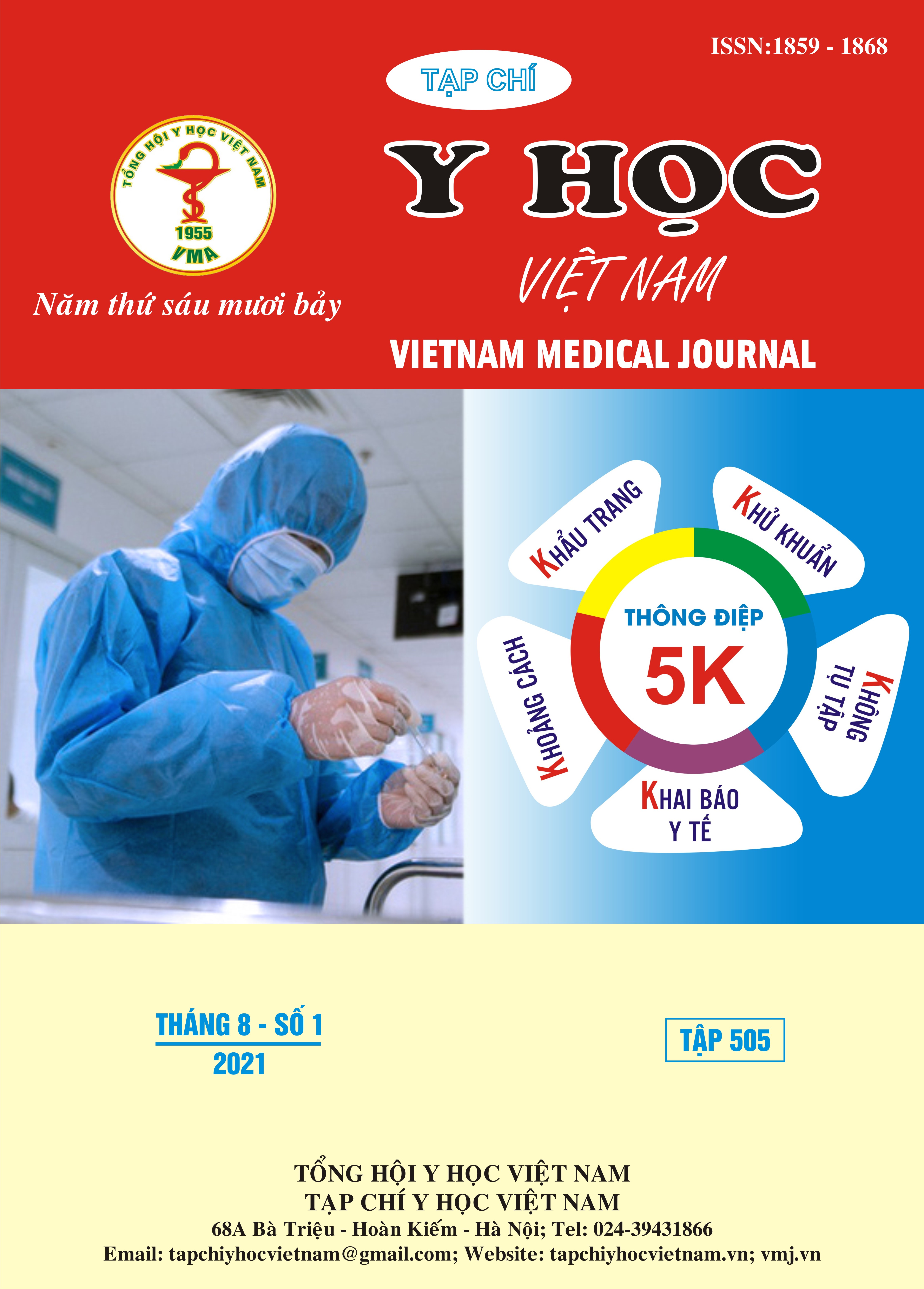DYNAMIC CONTRAST MAGNETIC RESONANCE IMAGING (DCE-MRI) AND DIFFUSION WEIGHTED MR IMAGING (DWI) FOR DIFFERENTIATION BETWEEN BENIGN AND MALIGNANT PAROTID GLAND TUMORS
Main Article Content
Abstract
Purpose: To determine the value of adding diffusion-weighted (DW) magnetic resonance (MR) imaging to dynamic contrastmaterial–enhanced MR imaging when distinguishingbetween benign and malignant parotid tumors. Material and Methods: Theprospective study was conducted on 39 parotid salivary gland tumors with 39 lesions (25 benign, 14 malignant) at the National cancer hospital from June 2020 to June 2021. We evaluated themean ADC, analyze the Time-intensity curve (TIC) of each lesion, determining the value of DWI and DCE in distinguishing benign and malignant parotid tumors. Results: Pleomorphic adenomas have no diffusion restriction on DWI and ADC maps. Malignant neoplasms, Warthin tumors, or lymphomas restricted diffusion. ADC threshold values between pleomorphic adenomas and carcinomas were 1,415 x10-3 mm2/s with sensitivity and specificity of 72% and 98%, respectively. ADC threshold valueswere 0.905 x 10-3 mm2/s between Warthin tumors and carcinomas with sensitivity and specificity of 93% and 99%, respectively. On the DCE, when the lesions have a curve of types A and D regarded as benign and there is an overlap when the lesions have a curve of type B and C. The combination of DWI and DCE improves the differentiation between benign and malignant lesions significantly compared with using each method (p < 0.05). Conclusion: Diffuse magnetic resonance with ADC value combined with dynamic contrast magnetic resonance imaging is a useful method for differential diagnosis of common tumors in the parotid glands.
Article Details
Keywords
parotid gland tumors, DWI, ADC, DCE, Time-intensity curve (TIC)
References
2. Som PM, Biller HF. High-Grade Malignancies of the Parotid Gland: Identification with MR Imaging. Radiology 1989;173:823–826.
3. Witt RL. The Significance of the Margin in Parotid Surgery for Pleomorphic Adenoma: The Laryngoscope. 2002;112(12):2141-2154. doi:10.1097/00005537-200212000-00004
4. Som PM, Biller HF. High-grade malignancies of the parotid gland: identification with MR imaging. Radiology. 1989;173(3):823-826. doi:10.1148/radiology.173.3.2813793
5. Freling NJ, Molenaar WM, Vermey A, et al. Malignant parotid tumors: clinical use of MR imaging and histologic correlation. Radiology. 1992;185(3):691-696. doi:10.1148/radiology.185.3.1438746
6. Yabuuchi H, Matsuo Y, Kamitani T, et al. Parotid Gland Tumors: Can Addition of Diffusion-weighted MR Imaging to Dynamic Contrast-enhanced MR Imaging Improve Diagnostic Accuracy in Characterization? Radiology. 2008; 249(3):909-916. doi:10.1148/radiol.2493072045
7. Motoori K, Iida Y, Nagai Y, et al. MR Imaging of Salivary Duct Carcinoma. Published online 2005:6.
8. Eida S, Sumi M, Sakihama N, Takahashi H, Nakamura T. Apparent Diffusion Coefficient Mapping of Salivary Gland Tumors: Prediction of the Benignancy and Malignancy. Am J Neuroradiol. 2007;28(1):116-121.
9. Eida S, Sumi M, Nakamura T. Multiparametric magnetic resonance imaging for the differentiation between benign and malignant salivary gland tumors. J Magn Reson Imaging. 2010;31(3):673-679. doi:10.1002/jmri.22091
10. Habermann CR, Gossrau P, Graessner J, et al. Diffusion-Weighted Echo-Planar MRI: A Valuable Tool for Differentiating Primary Parotid Gland Tumors? RöFo - Fortschritte Auf Dem Geb Röntgenstrahlen Bildgeb Verfahr. 2005;177(07):940-945. doi:10.1055/s-2005-858297


